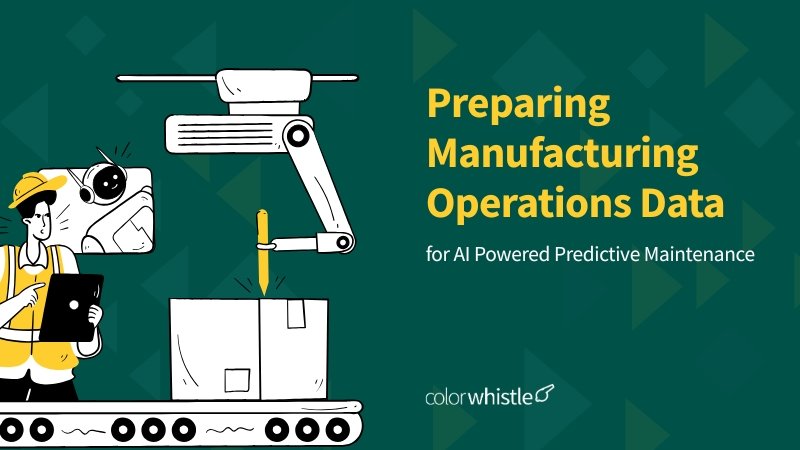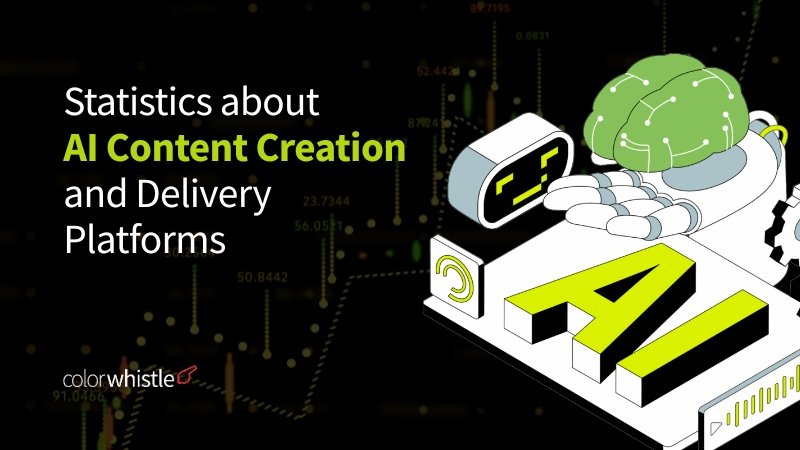AI-powered predictive maintenance is transforming manufacturing by shifting maintenance strategies from reactive to proactive, directly impacting operational reliability and profitability. Leveraging advanced analytics and machine learning, manufacturers can detect early signs of equipment failure and intervene before production is disrupted.
Key benefits realized with this approach include:
- Reduced unplanned downtime through early fault detection
- Significant cost savings from optimized maintenance scheduling versus emergency repairs
- Improved safety for operators as catastrophic failures are minimized
- Enhanced efficiency as equipment runs closer to optimal conditions
Preparing Manufacturing Operations Data for AI-Powered Predictive Maintenance focuses on harnessing a variety of data sources:
- High-frequency sensor logs (temperature, vibration, pressure)
- Machine runtime statistics
- Historical breakdown and service records
AI models ranging from supervised learning to anomaly detection analyze these datasets for subtle deviations that signal wear or impending failure. Seamless integration with Manufacturing Execution Systems (MES) or Enterprise Resource Planning (ERP) systems is critical, enabling real-time actionability and streamlined workflows within existing factory automation architectures.
A recent implementation illustrates the power of this methodology: By analyzing integrated sensor logs and machine runtimes, an AI model accurately predicted bearing wear in a CNC milling machine weeks ahead of a traditional inspection cycle, delivering measurable reductions in both downtime and maintenance expenditure.
This proactive approach to maintenance mirrors the principles of AI-Powered Website Maintenance, which ensures that websites remain fast, secure, and accessible. Such strategies can also be applied across various sectors, including education, where AI-powered maintenance can significantly enhance website performance.
Moreover, the importance of digital presence in today’s market cannot be understated. Hence, leveraging Digital Marketing Services can further boost business performance by enhancing online visibility and customer engagement.
Lastly, businesses looking to establish or improve their online presence can benefit from professional WordPress Development Services. With custom solutions ranging from $490 to $50K, these services ensure fast delivery and high-quality outcomes.
Understanding Manufacturing Operations Data
Effective AI-powered predictive maintenance relies on collecting and understanding manufacturing operations data. This data includes various types that are essential for predicting equipment failures and optimizing maintenance schedules.
Types of Relevant Data Collected
1. Sensor Logs
These logs capture real-time measurements from various sensors embedded in manufacturing equipment. Key parameters include:
Temperature: Variations can indicate overheating or cooling system malfunctions.
Vibration: Abnormal vibration patterns often signal mechanical issues or wear.
Torque: Changes in torque can reveal strain or misalignment problems.
2. Machine Runtime Data
This includes detailed records of machine operations, such as:
Operational Cycles: Tracking the number of cycles can help identify wear patterns.
Downtime Information: Recording instances of downtime aids in understanding operational inefficiencies.
3. Historical Breakdown Records
Documentation of past failures provides insights into recurring issues and helps in training AI models to recognize similar future patterns.
Importance of Comprehensive Data Collection
Collecting comprehensive data is crucial for accurate AI predictions. Each data type contributes valuable information about the machine’s health and operational conditions. The integration of these diverse datasets enables a holistic view, enhancing the predictive capabilities of AI models:
“The more extensive and detailed the dataset, the better equipped AI models are to forecast potential issues and recommend timely maintenance actions.”
Challenges in Acquiring Clean and Integrated Datasets
Several challenges arise when gathering data from different sources:
- Data Integration: IoT devices, legacy systems, and modern sensors often produce data in varying formats. Integrating these disparate sources into a unified platform requires significant effort.
- Data Quality: Raw sensor data may contain noise and errors that need to be filtered out. Inconsistent readings due to sensor malfunctions or environmental factors can impair model accuracy.
- Legacy Systems: Older machines may lack advanced sensors, making it challenging to collect comprehensive data without retrofitting them with modern IoT devices.
Addressing these challenges is critical for preparing high-quality datasets that enable effective AI-powered predictive maintenance solutions within manufacturing operations.
Also Read
Ensuring Data Quality for Effective AI Models
Noise Removal
Noise removal is critical to improve the quality of raw sensor data. Manufacturing environments are often noisy, with sensors collecting extraneous data that can obscure meaningful patterns. Techniques such as filtering and smoothing help eliminate irrelevant fluctuations and transient spikes. For example, a low-pass filter can be used to remove high-frequency noise from vibration data, making underlying trends more apparent.
Data Normalization
Data normalization ensures consistency across different sensor types and machines. Sensors may have varying ranges and units; normalizing these data points to a common scale is essential for unbiased AI model training. Methods such as min-max scaling or z-score normalization can standardize the data, converting raw values into comparable metrics. This harmonization facilitates accurate analysis and prediction by machine learning algorithms.
Structuring Heterogeneous Datasets
Manufacturing operations generate diverse data formats from IoT devices, legacy systems, and different sensor types. Structuring heterogeneous datasets involves converting this varied raw input into formats suitable for machine learning algorithms:
Data synchronization: Aligning timestamps across multiple sources to ensure temporal coherence.
Feature extraction: Transforming raw sensor signals into higher-level features that capture essential characteristics of the equipment’s condition.
Aggregation: Combining related data points like average temperature over time intervals or cumulative runtime to create comprehensive datasets.
Organizing this information into structured tables or matrices allows AI models to process and analyze it effectively.
Effective preprocessing encompassing noise removal, normalization, and structuring is foundational in preparing manufacturing operations data for predictive maintenance powered by AI. By ensuring high-quality input, these steps enhance the reliability and accuracy of predictive models deployed in real-world manufacturing scenarios.
Feature Engineering for Enhanced Fault Detection Capabilities
Feature engineering is a critical step in preparing manufacturing operations data for AI-powered predictive maintenance. This process involves selecting and extracting meaningful features from raw data that can indicate the health of equipment and potential failure modes.
Using Domain Expertise
Domain expertise plays an essential role in identifying critical parameters that reflect machinery condition. Experts can pinpoint specific indicators that signal wear, anomalies, or impending failures based on deep knowledge of equipment behavior. For example:
- Temperature fluctuations: Sudden changes might indicate overheating or cooling system malfunctions.
- Vibration patterns: Variations in vibration frequency can reveal misalignments, imbalance, or bearing issues.
- Torque measurements: Abnormal torque values could signal mechanical stress or component degradation.
Techniques for Feature Extraction
Effective feature extraction transforms raw sensor data into actionable insights by isolating key metrics. Several techniques can be employed to derive features that provide a clearer picture of machine health:
Frequency Analysis:
- Fast Fourier Transform (FFT): Converts time-domain vibration signals into frequency components to identify abnormal frequencies indicative of faults.
- Wavelet Transform: Decomposes signals into various frequency bands to detect transient events and localized anomalies.
Statistical Measures:
- Mean and Standard Deviation: Basic statistical measures of sensor readings to understand normal operating ranges and detect deviations.
- Root Mean Square (RMS): Calculates the magnitude of vibration signals to assess overall equipment condition.
Time-Series Analysis:
- Moving Averages: Smooths out short-term fluctuations and highlights long-term trends.
- Correlation Coefficients: Evaluates the relationship between different sensor readings to uncover hidden patterns.
Practical Example
Consider a scenario where vibration sensors are installed on a rotating machine component. By applying FFT, we can extract frequency peaks that correspond to specific failure modes such as bearing defects or shaft misalignment. These features, combined with historical breakdown records, enable accurate prediction models to alert maintenance teams before critical failures occur.
Through strategic feature engineering, the transformation from raw sensor data to insightful parameters ensures that AI models are equipped with relevant information for precise fault detection capabilities in manufacturing operations.
Developing and Validating Machine Learning Models for Predictive Maintenance
Machine learning models are the main intelligence behind predictive maintenance in manufacturing. The choice of model architecture depends on both the complexity of the operational data and the specific maintenance goals.
AI Model Types for Predictive Maintenance
1. Supervised Learning Models
These models use labeled historical data, such as records of machine failures and healthy operations, to learn patterns associated with different failure modes. Common algorithms include Random Forests, Support Vector Machines, and Gradient Boosted Trees. Supervised approaches are highly effective when sufficient failure event data is available.
2. Anomaly Detection Methods
In scenarios where failures are rare or labels are unavailable, unsupervised or semi-supervised anomaly detection becomes essential. Techniques such as Autoencoders, Isolation Forests, or One-Class SVMs are applied to establish baselines of normal machine behavior. Deviations from these learned baselines can signal early signs of equipment anomalies.
Model Training on Prepared Datasets
- Data Preparation: Leveraging the cleaned, structured, and feature-rich datasets prepared in previous steps, training involves feeding historical sensor logs, runtime data, and breakdown records into chosen algorithms.
- Learning Normal vs. Faulty Behavior: Models ingest a combination of positive samples (normal operation) and negative samples (failure or degraded states), learning to distinguish between subtle operational shifts that may precede breakdowns.
- Incremental Retraining: Given the dynamic nature of manufacturing environments, continuous retraining with new data ensures the machine learning models adapt to evolving process conditions.
Model Validation Against Historical Failures
- Backtesting with Known Events: Reliable validation involves simulating predictions on past data where actual failures are documented. Performance metrics such as precision, recall, F1-score, and lead time to detection provide quantifiable insights into predictive reliability.
- Cross-Validation Strategies: Techniques like k-fold cross-validation help ensure that models generalize well across different production lines or equipment types.
- False Positive/Negative Analysis: Examining instances where the model incorrectly predicts a fault or misses an impending failure helps refine both feature selection and algorithmic parameters.
Effective development and rigorous validation of machine learning models establish trust in AI-driven predictive maintenance systems—enabling confident deployment alongside existing MES or ERP platforms. This predictive maintenance approach is not limited to manufacturing but also significantly enhances efficiency and reduces costs in industries like travel by implementing smart maintenance strategies.
Deploying AI-Powered Predictive Maintenance Systems in Manufacturing Operations
Steps for Seamless Implementation
Implementing AI-powered predictive maintenance systems within active manufacturing operations requires meticulous planning to avoid disruptions. Here are critical steps to ensure a smooth deployment:
- Integration with Existing Systems: Align AI models with existing Manufacturing Execution Systems (MES) and Enterprise Resource Planning (ERP) systems to leverage current infrastructure. This may also involve a website redesign to better accommodate the new technology.
- Phased Rollout: Begin with a pilot program on selected machinery, such as that in tire manufacturing, where AI tools can be particularly beneficial, to validate the system’s effectiveness before full-scale implementation.
- Stakeholder Training: Conduct comprehensive training sessions for operators, maintenance personnel, and IT staff to ensure they can effectively use and maintain the new system. If the new system involves AI app development, specific training on these applications will be essential.
- Data Streamlining: Ensure continuous data flow from IoT devices and sensors into the AI system, maintaining real-time data acquisition for accurate predictions.
Continuous Monitoring and Performance Tracking
To maintain the efficacy of predictive maintenance systems, it is crucial to set up continuous performance monitoring mechanisms:
- Dashboards: Develop intuitive dashboards that provide real-time insights into machine health and prediction accuracy. These dashboards should be accessible to all relevant stakeholders.
- Alert Mechanisms: Implement automated alert systems that notify operators and maintenance teams of any anomalies or impending failures detected by the AI model.
- Regular Audits: Schedule periodic audits and evaluations of AI model performance against actual maintenance outcomes to refine algorithms and improve accuracy.
By following these steps, manufacturers can deploy AI-powered predictive maintenance systems effectively, ensuring minimal disruption while enhancing operational efficiency through continuous monitoring.
Realizing Benefits Through Prepared Data and AI Integration in Manufacturing Predictive Maintenance Systems
A strong foundation in preparing manufacturing operations data for AI powered predictive maintenance directly leads to measurable business outcomes. When high-quality, integrated datasets feed advanced analytics engines, predictive alerts become both timely and actionable.
Downtime Reduction through Precise Predictive Alerts
AI-driven systems analyze real-time sensor feeds, temperature, vibration, and torque trends against historical breakdown patterns. Early warnings of equipment anomalies prompt targeted inspections or part replacements before failure escalates.
1. Minimized Unplanned Outages
A stamping press exhibiting abnormal vibration signals is flagged by the AI model days before a bearing seizes, enabling preemptive replacement during a planned lull.
2. Optimized Resource Allocation
Maintenance teams shift from reactive firefighting to strategic intervention. Schedules are data-driven, reducing unscheduled line stops and preserving production continuity.
3. Case Example
AI-driven systems analyze real-time sensor feeds,temperature, vibration, and torque trends against historical breakdown patterns. Early warnings of equipment anomalies prompt targeted inspections or part replacements before failure escalates.
“AI integration transforms maintenance from a cost center into a source of operational agility—ensuring assets run longer at lower risk.”
Cost Savings via Optimized Maintenance Scheduling
As we embrace this data-first approach, it unlocks tangible performance improvements. Continuous feedback loops between operational data and AI models refine alert accuracy over time. As datasets grow richer and models learn from actual outcomes, predictive maintenance strategies yield compounding returns in downtime reduction and cost savings.
1. Reduction in Emergency Repairs
Addressing incipient faults early prevents catastrophic failures, which typically demand expensive parts, labor overtime, and expedited logistics.
2. Long-Term Asset Longevity
Proactive interventions slow wear progression across critical assemblies. This extends machinery service intervals and defers capital expenditures on replacements.
3. Intelligent Inventory Management
Accurate predictions inform spare parts stocking policies, minimizing both overstock and costly last-minute procurement.
With these foundations in place, real-world applications showcase how advanced analytics translate into actionable insights.
Also Read
Case Study: Successful Application of AI in Predictive Maintenance Using Machine Logs Analysis
Background
A global automotive manufacturer faced recurring issues with unexpected failures in its stamping presses, causing unplanned downtime and elevated maintenance costs. The root cause analysis revealed that wear prediction was challenging due to fragmented and incomplete machine logs.
Data Preparation Strategy
The team adopted a robust approach to Preparing Manufacturing Operations Data for AI-powered predictive Maintenance:
Integrated Data Sources:
- Collected continuous sensor logs (temperature, vibration, torque) across multiple presses.
- Consolidated runtime data and historical breakdown records from both IoT-enabled sensors and legacy PLC systems.
- Ensured data integrity by implementing automated cleansing processes to eliminate inconsistent entries.
Feature Engineering:
- Domain experts identified specific vibration frequencies and torque fluctuation patterns as early indicators of bearing degradation.
- Machine learning engineers extracted these features, normalizing across press models for consistency.
AI Model Development
An ensemble machine learning model was trained using the enriched dataset. Supervised learning techniques mapped sensor log patterns to historical wear events, while anomaly detection algorithms flagged deviations from established baselines.
“By leveraging harmonized machine logs and runtime data, the AI model accurately predicted the onset of component fatigue—often weeks before traditional inspections would have detected any issue.”
Operational Impact
Reduced Unexpected Downtime: Predictive alerts allowed maintenance teams to schedule interventions during planned outages, cutting emergency stoppages by 40%
Maintenance Cost Optimization: Early detection minimized secondary damage, reducing spare part consumption by 25% year-over-year.
Process Improvement: Real-time dashboards provided actionable insights, supporting continuous improvement in maintenance routines.
Key Takeaway
This case study demonstrates how meticulous preparation of manufacturing operations data, combined with advanced analytics, transforms raw machine logs into a strategic asset. The result is a predictive maintenance system capable of identifying wear long before failure occurs, delivering measurable gains in both reliability and operational efficiency.
In addition to leveraging AI for predictive maintenance, the automotive manufacturer also recognized the importance of digital marketing strategies such as YouTube SEO to enhance brand visibility and attract global partnerships. By utilizing YouTube SEO effectively, OEMs and component makers can significantly boost their online presence.
FAQs (Frequently Asked Questions)
What is AI-powered predictive maintenance in manufacturing and what are its key benefits?
AI-powered predictive maintenance in manufacturing leverages artificial intelligence models to analyze operational data such as sensor logs, machine runtime data, and breakdown history to predict equipment failures before they occur. Key benefits include reduced downtime, significant cost savings, improved safety for workers, and enhanced overall operational efficiency.
Which types of manufacturing operations data are essential for effective AI predictive maintenance?
Essential data types include sensor logs capturing parameters like temperature, vibration, and torque; machine runtime data that records operational hours and cycles; and historical breakdown records. Collecting comprehensive and high-quality datasets from these sources is crucial for accurate AI predictions.
How is data quality ensured for developing reliable AI models in predictive maintenance?
Data quality is ensured through processes such as noise removal to eliminate errors from raw sensor data, normalization to maintain consistency across different sensors and machines, and preprocessing to structure heterogeneous datasets into formats suitable for machine learning algorithms. These steps enhance the accuracy and reliability of AI models.
What role does feature engineering play in enhancing fault detection capabilities in manufacturing?
Feature engineering involves extracting critical parameters indicative of equipment health or failure modes using domain expertise. Techniques include analyzing vibration frequency components or torque fluctuations that signal wear or anomalies. This process creates meaningful features that improve the AI model’s ability to detect faults early.
How are machine learning models developed and validated for predictive maintenance applications?
Machine learning models suited for predictive maintenance include supervised learning algorithms and anomaly detection methods. These models are trained on prepared datasets to recognize deviations from normal operating conditions. Validation involves testing the models against known past failures to assess their prediction reliability before deployment.
What are the best practices for deploying AI-powered predictive maintenance systems in active manufacturing environments?
Deployment involves integrating AI systems seamlessly with existing MES or ERP platforms to avoid operational disruptions. Continuous monitoring dashboards should be established to track prediction accuracy over time, enabling timely adjustments. This approach ensures live environment deployment supports ongoing manufacturing operations effectively.
What’s Next?
Now that you’ve had the chance to explore our blog, it’s time to take the next step and see what opportunities await!






This blog post is incredibly useful and instructive. I want to thank you for sharing this information.